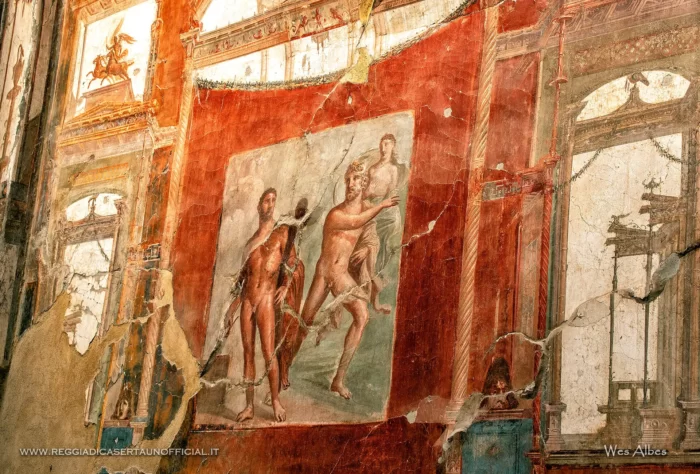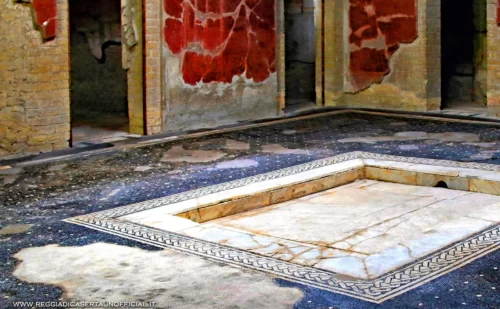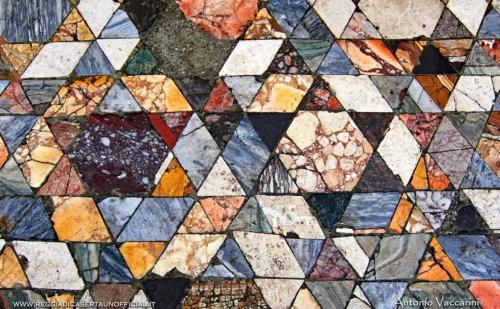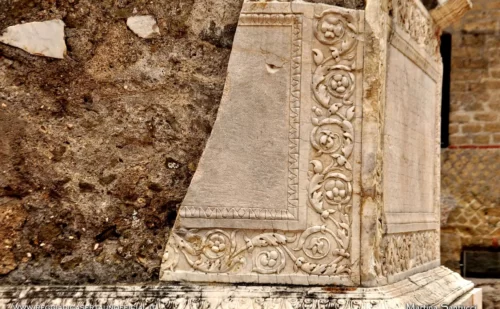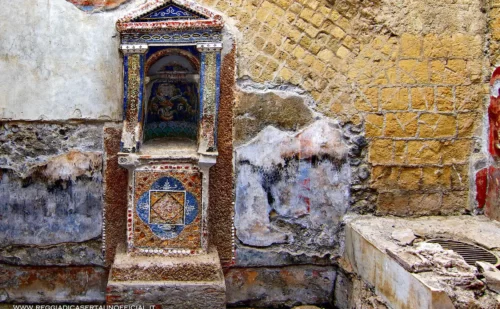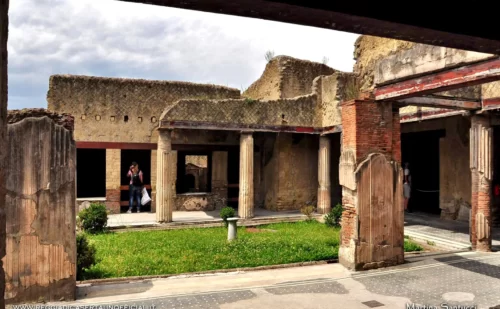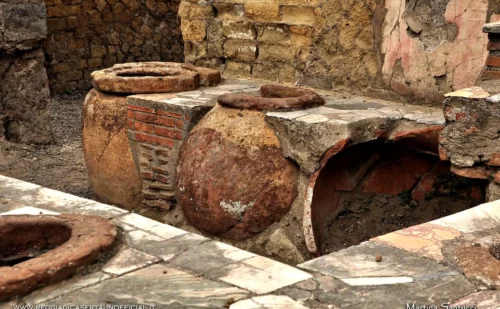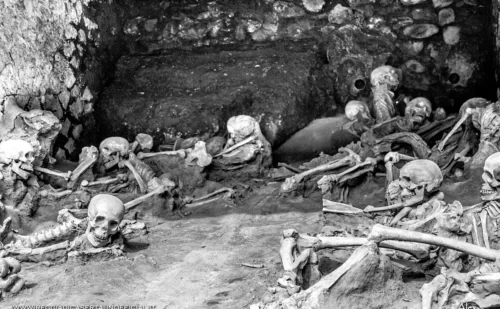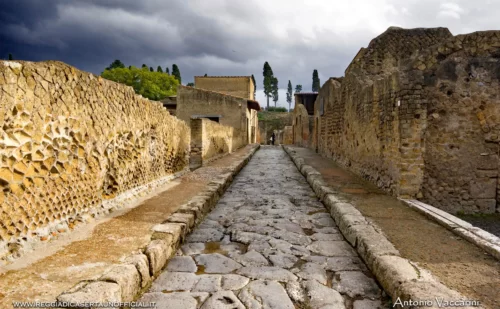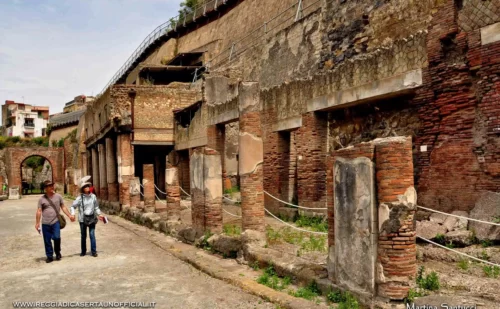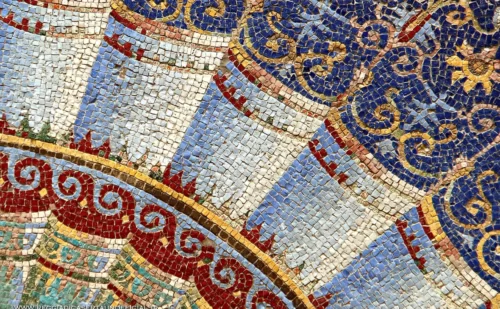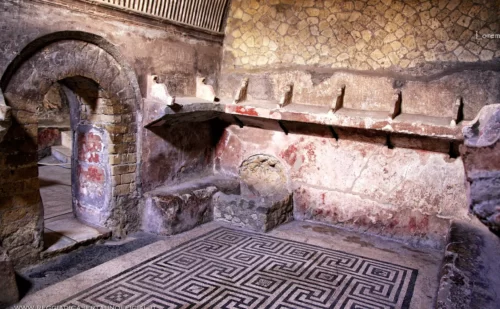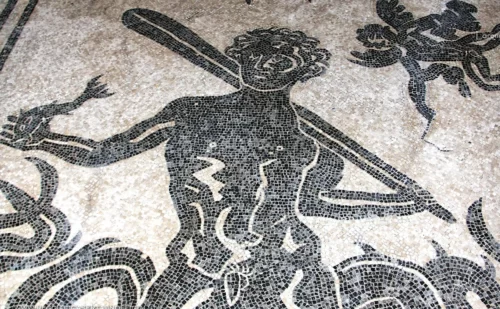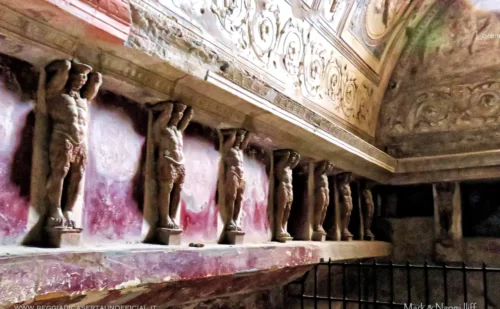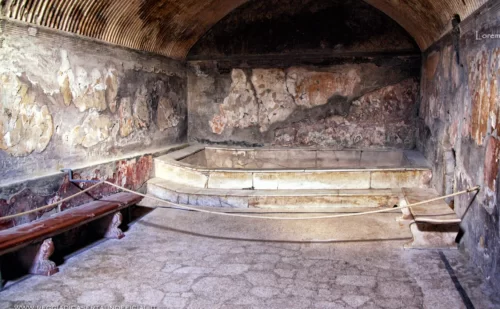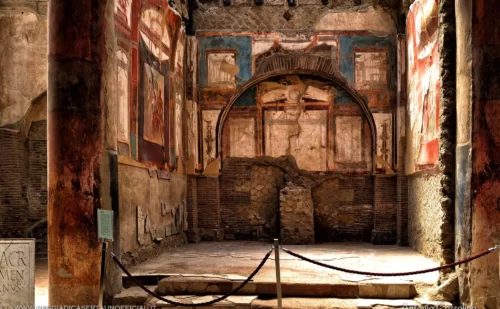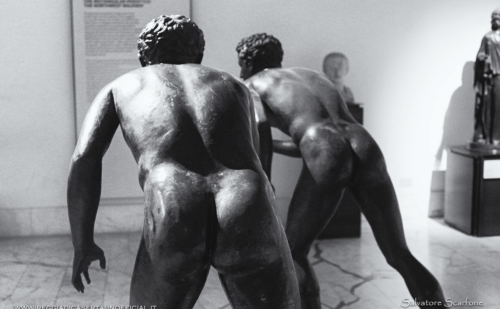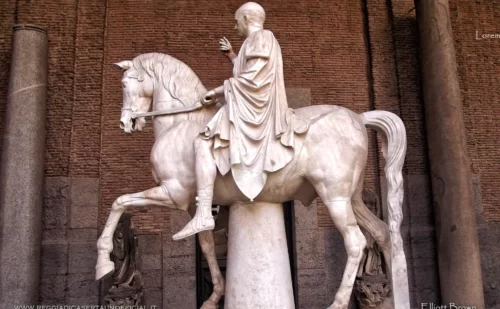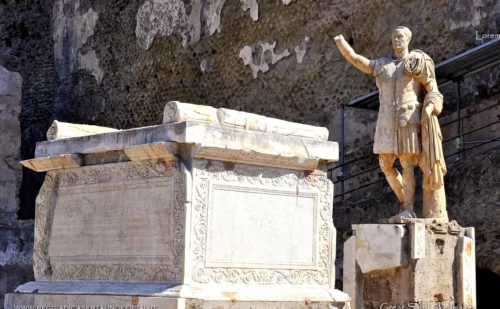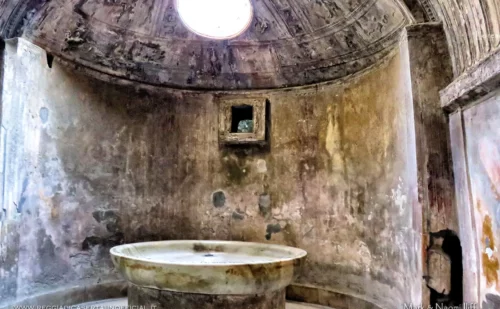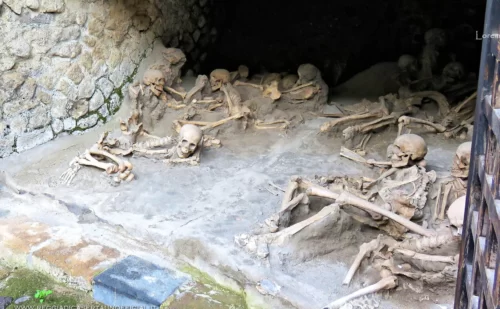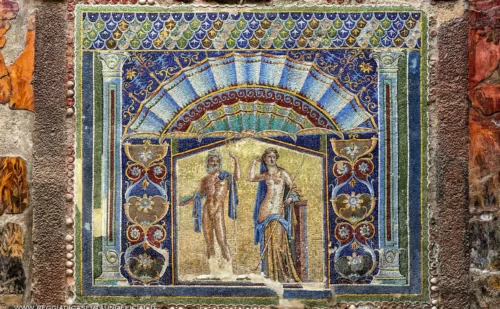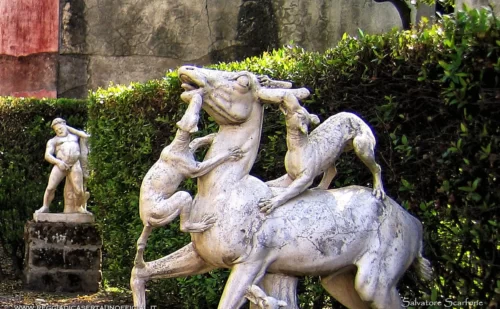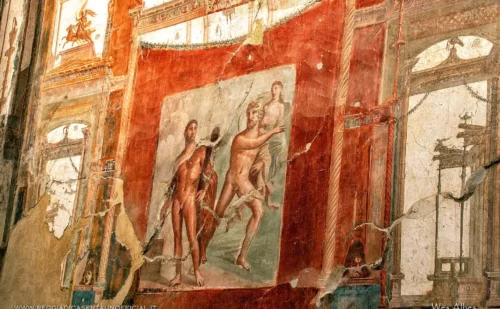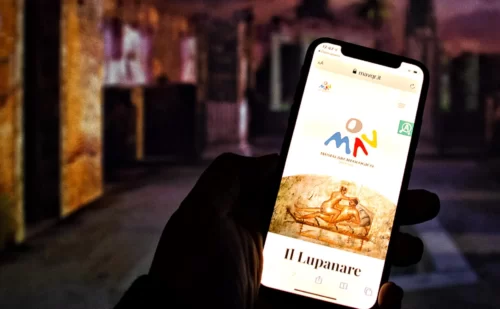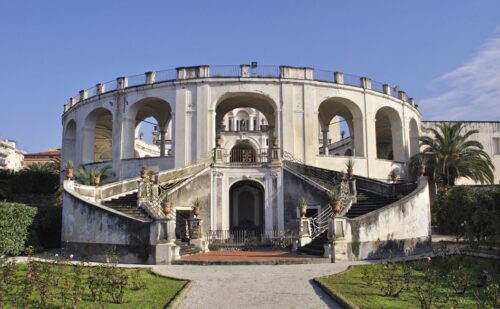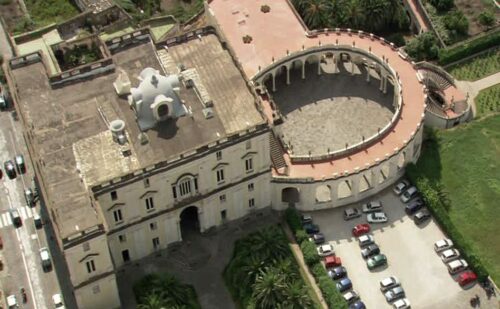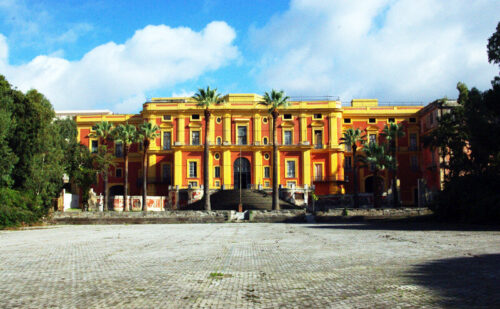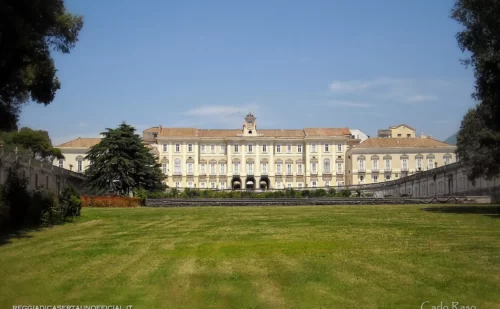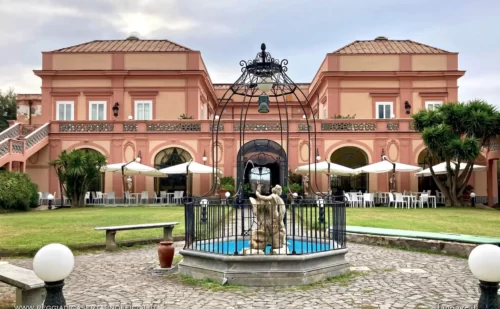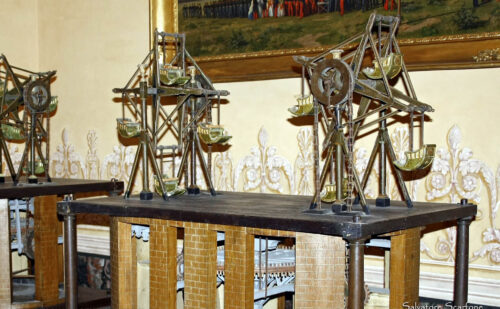Herculaneum
Discover the fascinating Archaeological Park of Herculaneum, and don't miss the splendid view of the Villas of the Golden Mile
The Archaeological Park of Herculaneum
Although less known than Pompeii, the Herculaneum Archaeological Park is perhaps more poignant for its ability to combine moments of great beauty and agony due to the skeletons of the victims still in their place.
The name Ercolano derives from Hercules, because according to legend the city was founded by the hero in 1243 BC. It was one of the favorite destinations of the Roman nobility, who wanted to have a second home here. Very well known is the stupendous Villa dei Papiri, whose sculptures as well as all the finds from Herculaneum are currently in the Archaeological Museum of Naples
- 8:30am-7:30pm (from March 16th to October 14th)
- 8:30am-5:00pm (from October 15th to March 15th)
Photos of the Archaeological Park of Herculaneum
The main attractions of the Archaeological Park of Herculaneum
Villa of the Papyri
The Villa dei Papiri takes its name from the huge collection of ancient papyri found in it. Owned by the Pisoni family, it was one of the largest villas of antiquity and one of the richest in works of art, visible today in the Archaeological Museum of Naples.
Nonian Basilica
The Noniana Basilica is a public building from the Roman era, still largely to be brought to light. Various statues and frescoes have been found, including a Roman head of an Amazon still colored.
Marco Nonio Balbus terrace
The terrace has in the center the funerary altar of Marco Nonio Balbo, with his statue behind it placed by his freedman Marco Nonio Volusiano. Balbo, praetor, proconsul and tribune of Octavian, originally from Nuceria, but residing in Herculaneum, had many monuments paid to him for having contributed to the monumentalization of the city also by restoring the walls and doors at his own expense and building the basilica
Central Baths
The Central Baths date back to the second half of the 1st century BC, and numerous skeletons of the victims of the Vesuvius eruption were found here still wearing coins and jewels. In the Tepidarium there is a stupendous mosaic with black and white tiles depicting a triton among dolphins.
Fornixes
The Fornixes were the warehouses of the port also used to store boats. Here were found about 300 skeletons of victims who tried to flee by sea with all their jewels on. In addition to the bodies, a large 9m Roman boat was found, with the skeletons of an oarsman and a soldier, with swords, chisels and various coins.
House of Neptune and Amphitride
The House of Neptune and Amphitride was owned by a wealthy merchant who, to demonstrate his wealth, had even had it decorated with a very expensive product at the time: glass paste mosaics. The name of the house derives from the mosaic of the god Neptune and his companion Amphitride which decorates the east wall of the house.
Deer House
Splendid villa with terrace overlooking the sea owned by a former slave who had been set free shortly before the eruption (...when you are not born lucky...) The villa takes its name from the sculptures of deer that are in the garden.
The seat of the Augustali
The Seat of the Augustali, the city order of freedmen dedicated to the cult of the emperor, was built when Augustus was still alive. At the back of the room a chapel decorated with mythological scenes which contained the statue of Augustus.
Virtual Archaeological Museum
In the Virtual Archaeological Museum of Herculaneum there is a virtual and multimedia itinerary where you can experience the thrill of a surprising journey back in time up to a moment before the eruption of 79 AD. destroyed the cities of Pompeii and Herculaneum.
- GIORNI DI APERTURA: da martedì a domenica
- ORARI: 9:00-17:00
The Vesuvian Villas of the Golden Mile
The Golden Mile is the stretch of road between Corso Resina 189, in Ercolano, and Corso Vittorio Emanuele 87, in Torre del Greco. The name derives from the fact that it really measures a mile (1.6 km) and is defined as “golden” because it originally had many gardens full of citrus fruits and many noble palaces were built in the eighteenth century.
When King Charles of Bourbon decided to have the Reggia di Portici, caused all the aristocracy to compete in building a splendid villa on the coast of Herculaneum, giving rise to the so-called Golden Mile, a route full of wonderful eighteenth-century villas in rococo or neoclassical style with parks and sea-view.
At the time, the Real Villa della Favorita also had a playground, whose models of the rides are visible in the Royal Palace of Caserta
Some of the villas
Activities and things to do in Herculaneum
Find out what to do in Herculaneum and surroundings
Documentaries
Documentaries about the ancient city of Herculaneum
Virtual reconstruction of Herculaneum
Documentaries showing a virtual reconstruction of the city of Herculaneum
Guided visit to Herculaneum
Do you want to visit Herculaneum with a licensed tour guide? Request information about a tour.
This is only a form to request information, it does not imply an automatic reservation.
